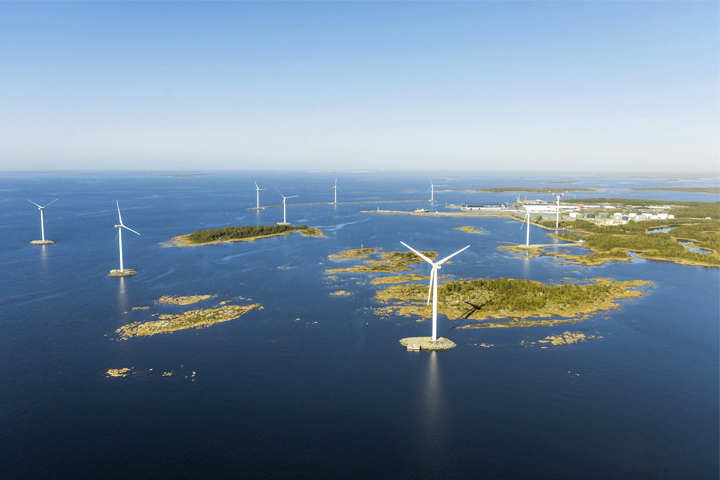In the coming years, the structure of electricity generation will rapidly shift towards carbon-neutrality as part of the transition from fossil fuels to emission-free generation. Major changes are occurring in consumption; for example, transport is becoming increasingly electrified.
Timo Kiiveri, Senior Vice President for Asset Management at Fingrid, says that the greatest challenge for the development of the grid is the dramatic growth in wind power. According to the Finnish Wind Power Association, the current generating capacity of six terawatt hours could increase as much as five-fold by 2030.
“The law obliges Fingrid to connect all new wind farms to the network. From the perspective of network design and construction, this is a challenge, as it is difficult to know beforehand which of the planned projects will ultimately come to fruition and remain viable,” Kiiveri states.
Increased need for power transmission
A large proportion of the new wind power capacity appears to be concentrated in northern Finland, while most of the consumption is in the south. At the same time, conventional thermal power generation, which has provided balancing power to accompany weather-dependent generation, is being decommissioned from the electricity market.
“As a consequence of wind power and decentralised energy generation, the grid must be reinforced across substantial parts of Finland, particularly in the wind power areas on the west coast, all the way up to the Lapland coast. New substations and power line connections are required,” says Juhani Tonteri, Fingrid’s Network Design Specialist.
The need for transmission capacity, particularly between the south and north of Finland, will increase in the coming years. A new cross-border power line between the northern parts of Sweden and Finland will further increase the need for capacity.
Tonteri points out that the design of the grid must also take into consideration the commissioning of the third nuclear reactor in Olkiluoto, as well as the potential construction of the Hanhikivi nuclear power plant.
“These will require large local network investments. Significant individual generation plants are challenging for the power system in a small country like Finland, not least because preparations must also be made for generation outages,” Tonteri continues.
EUR 1.3 billion in grid investments
Fingrid prepares grid plans for 10–20 years into the future. Timo Kiiveri says that preparations for the transformation of the energy market were made a long time ago.
The recently completed Coastal Line to Ostrobothnia will improve the transmission connections between the south and the north. The next investment for construction will be the Forest Line from Oulujoki to central Finland.
“We may well need to build another new transmission connection between the south and the north, known as the Lake Line, earlier than anticipated,” Kiiveri states.
Over the next decade, Fingrid will invest EUR 1.3 billion in the main grid, which is over EUR 100 million per year.
Kiiveri points out that investing the right sums at the right time will keep the network in good working order. New digital solutions are a big help with this. The Internet of Things will revolutionise matters such as substation maintenance.
“Thanks to sensors and new measuring devices, maintenance operations will increasingly switch from being time-based to being based on the actual condition of devices. Preventive maintenance increases reliability and saves costs,” Kiiveri says.






